I recently had the privilege of speaking at Medtrade 2017, and my task was to help HME’s (Home Medical Equipment companies) determine the right “mix” of digital and (not versus) traditional tactics. To do so, we looked at the pros and cons, recommended budget allocation, and the attribution challenges of both traditional and digital.
Interestingly, many of the industry specific trends we looked at mirrored the marketing trends seen outside of HME. I’ll share the highlights below in hopes that some of these data trends and information will be helpful to your business!
To begin, I did what every good digital marketer does and just Googled my topic.
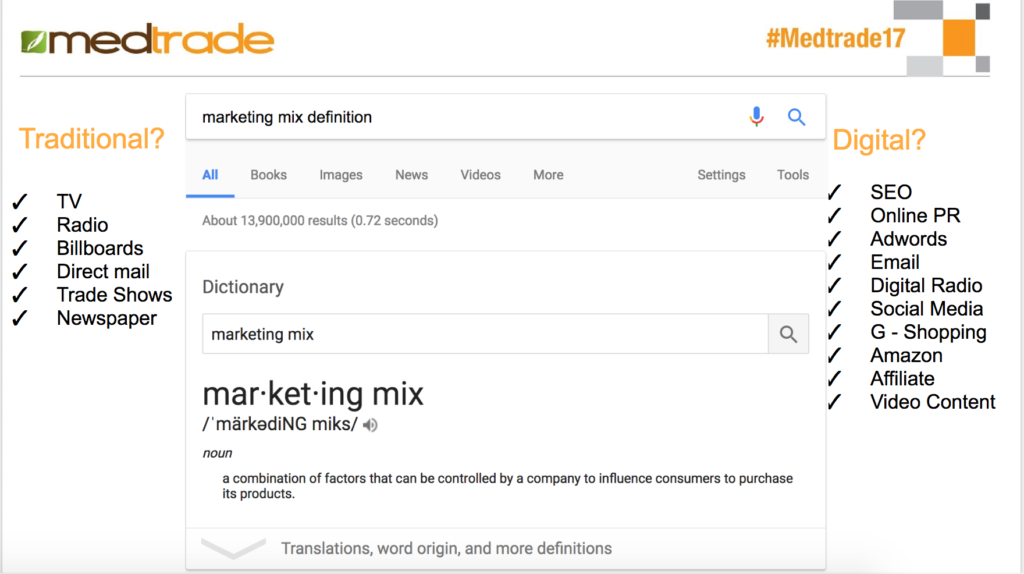
Note the definition – a combination of FACTORS (aka Tactics) that can be controlled by a company to influence consumers to purchase its products. It sounds so simple and very straightforward, but notice the number of results that are available (almost 14 million). There are lots of opinions and commentary around this topic!
Ask yourself these questions I asked the audience:
- What is your mix of tactics?
- Is your business living primarily in traditional? Or have you crossed over yet to the digital marketing world? Have you embraced search?
- Are there any absolute “must have” tactics that should be in every mix?
That last question was the tricky one as there are not any must haves on the list, because we know it’s all about reaching your customer wherever they are and through whatever medium will be most effective for him/her.
Every good marketing mixology discussion has to reference the Grandfather of Marketing, Peter Drucker! Pete said, ”The aim of marketing is to know and understand the customer so well the product or service fits him and sells itself.” To help define your customer, I recommended the Prospect Prioritization tool by Franklin Covey. What this will do is help identify the prospects in your pipeline that are most likely to become your customers. Once you’ve done that, the really fun part of marketing specifically to them begins! Not every prospect is created equal nor can they be treated as such.
After sharing thoughts on a custom 2018 marketing plan (too long for this post), we dove into the numbers. Regarding industry trends, the 2016 Healthcare Marketers Trend Report showed increases in marketing budgets from 2015 to 2016 for pharma, biotech, and medical devices. Percentage growth of budgets for companies under $500 million was an astounding 33%. Conclusion…competition is only getting greater!
So, where is this INCREASED budget going?
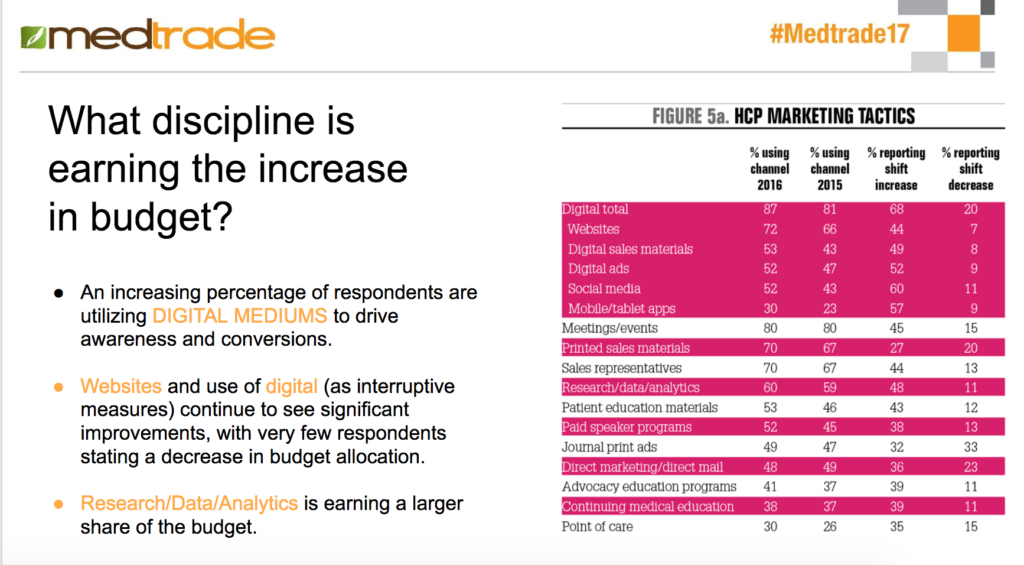
In short…digital. A quote from the MM&M Online who published the study, “Not that any results from the healthcare marketers report were preordained, but one was close: It was a safe bet that the trend toward a greater use of digital channels would continue.”
As you can see, digital is surging. Websites, digital sales materials, social media, paid marketing, and mobile apps are all reporting the greatest percentage of budget shift increases all while having low percentage of budget decreases. Also, as the desire for the C-Suite to calculate ROI increases, so does Research/Data/Analytics show a surge with 48% of respondents reporting a budget shift increase.
Was this true for the Non-HME businesses? Yes. Looking at the CMO Survey, digital is being allocated the bulk of these increased budgets. It’s interesting to note, however, that these numbers aren’t suggesting companies are abandoning traditional as the highest drop in traditional spend is only 3.6% in the B2B product category.
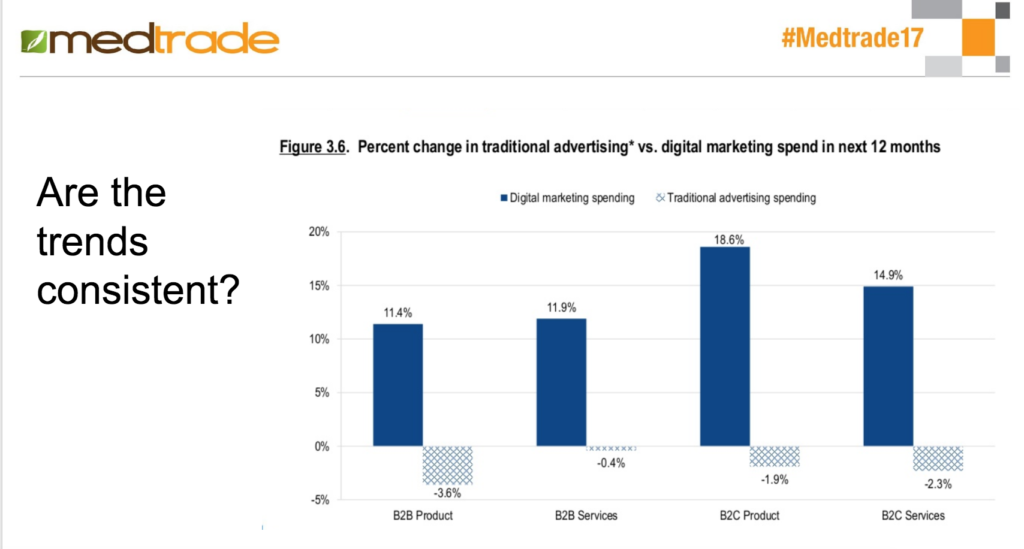
Next, we looked at what an overall marketing budget should be relative to overall revenue. To answer this, I again referenced the most recent CMO Survey.
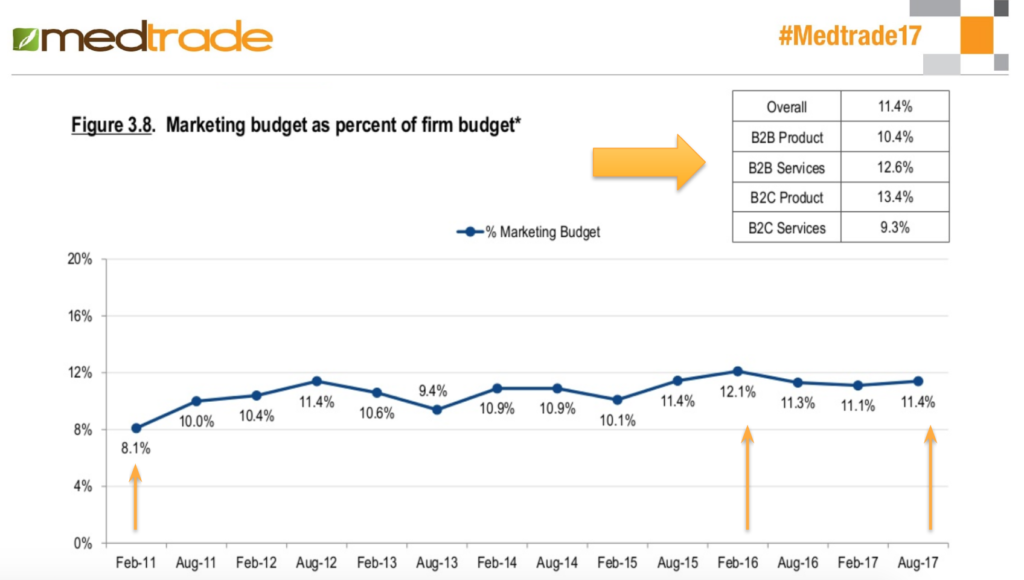
Surveying almost 3,000 top U.S. marketers at for-profit companies, the average response was 11.4%. This was a big number for most. Is your company’s marketing budget more or less?
With budgets increasing and with digital getting more of the budget, it was important to show why. So, why do you think digital is getting more of the budget? I think this study done by Marketing Science answers that question well. Check it out.
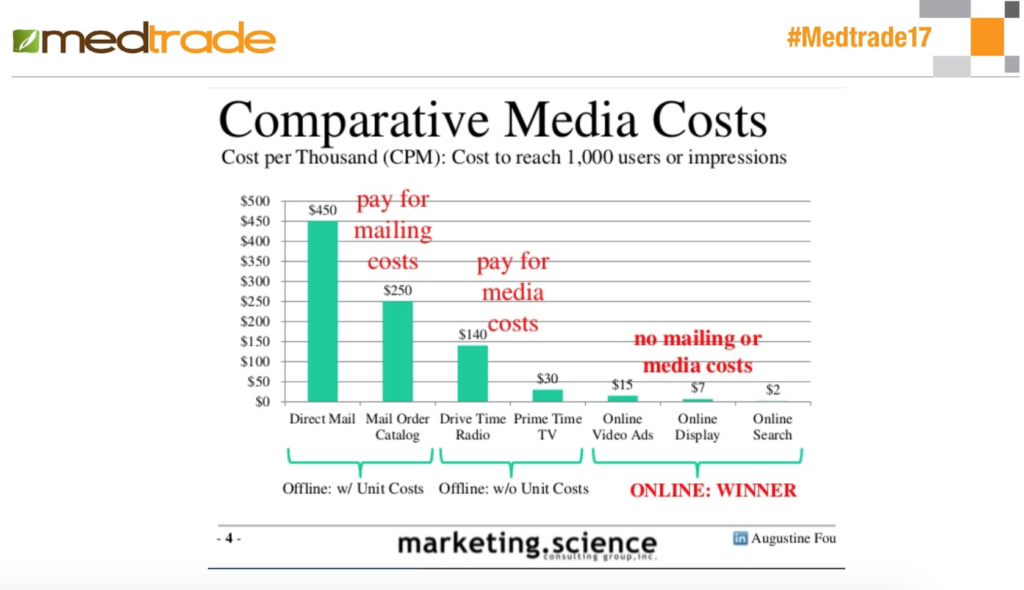
What this shows is cost per mil (CPM) which is the cost it takes to reach 1,000 users or to get 1,000 impressions. Look at the expense for online channels versus offline channels. $2 and $7 versus $450 and $250. It’s a huge difference!
After sharing all of that data, that was very “pro” digital marketing, I shared slides that outlined the pros and cons of each, starting with the pros of traditional!
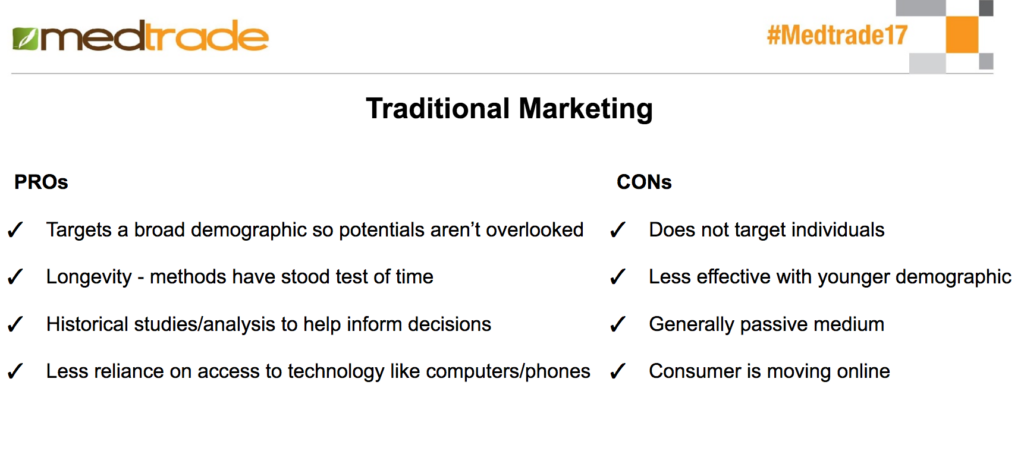
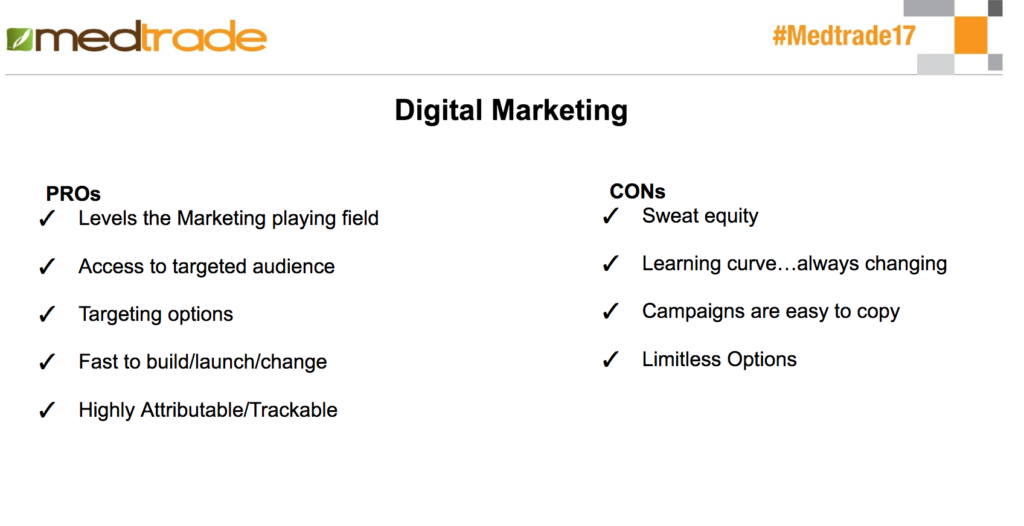
To emphasize the value of traditional, I shared the comments from Gary Vaynerchuk regarding how the number #1 play in marketing, in his opinion, is traditional…the Super Bowl. For those, however, that don’t operate on a Super Bowl budget, I shared how TV can be a difficult medium. The below image is two WTM Digital team members using their “second screen” during the commercials of “This Is Us.” Attention is so hard to keep! 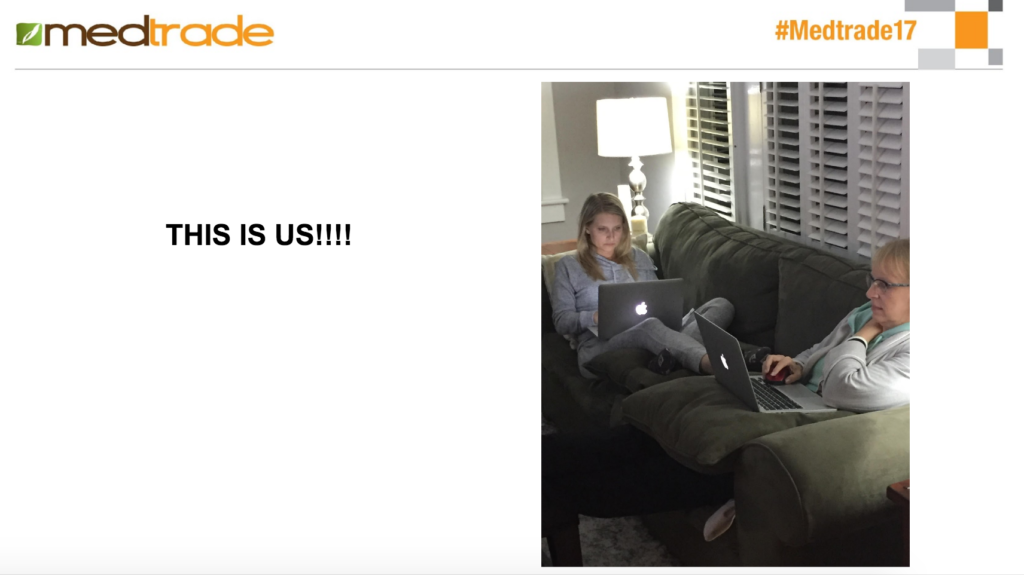
Drilling down just a bit further into digital marketing, we did an interactive activity to help determine when to do organic versus paid marketing. This is one of the top questions I receive from prospective clients. Check out the below 8 scenarios, and feel free to quiz yourself.
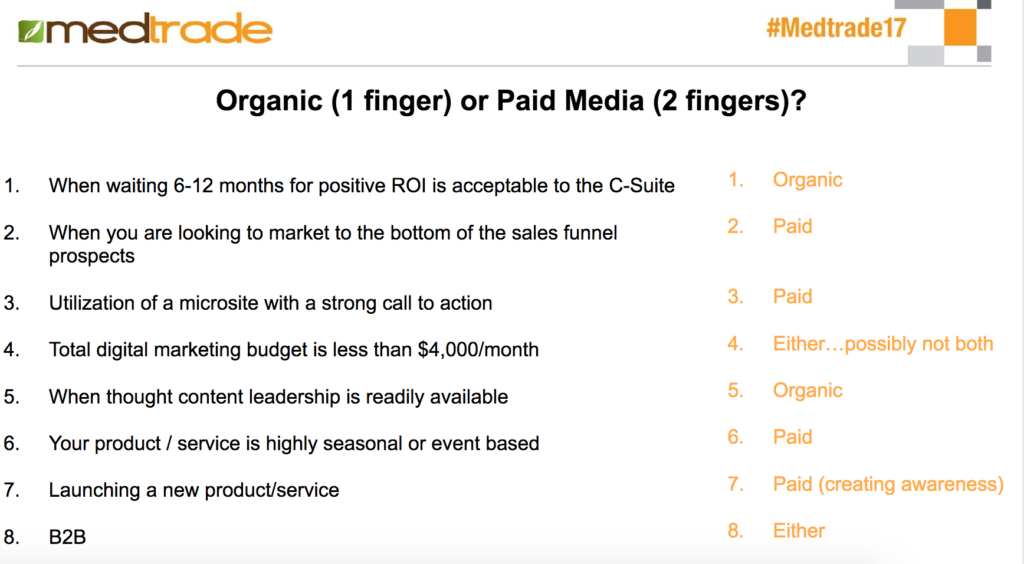
Finally, we ended with attribution and John Wanamaker made an appearance, “half the money I spend on advertising is wasted, the trouble is I don’t know which half.” Proper attribution is so critical to making smart marketing decisions! My homework for the attendees (and you) is, if you don’t have it already, make sure that you have Google Tag Manager installed on your site. The insight it provides is invaluable.
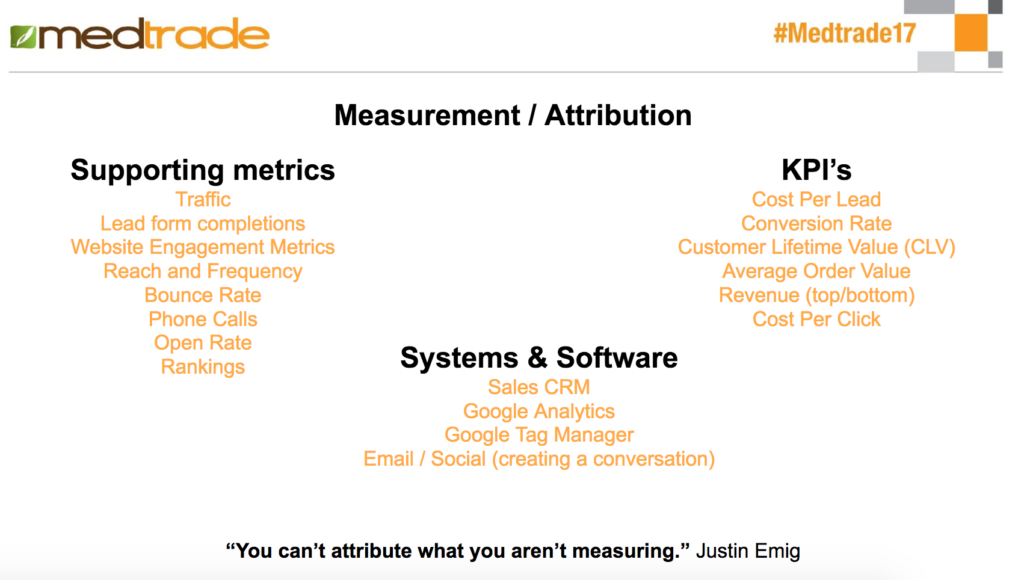
My hope is that your company has found the right marketing mix! If not, know that I and WTM Digital would welcome that opportunity to help you do so.
